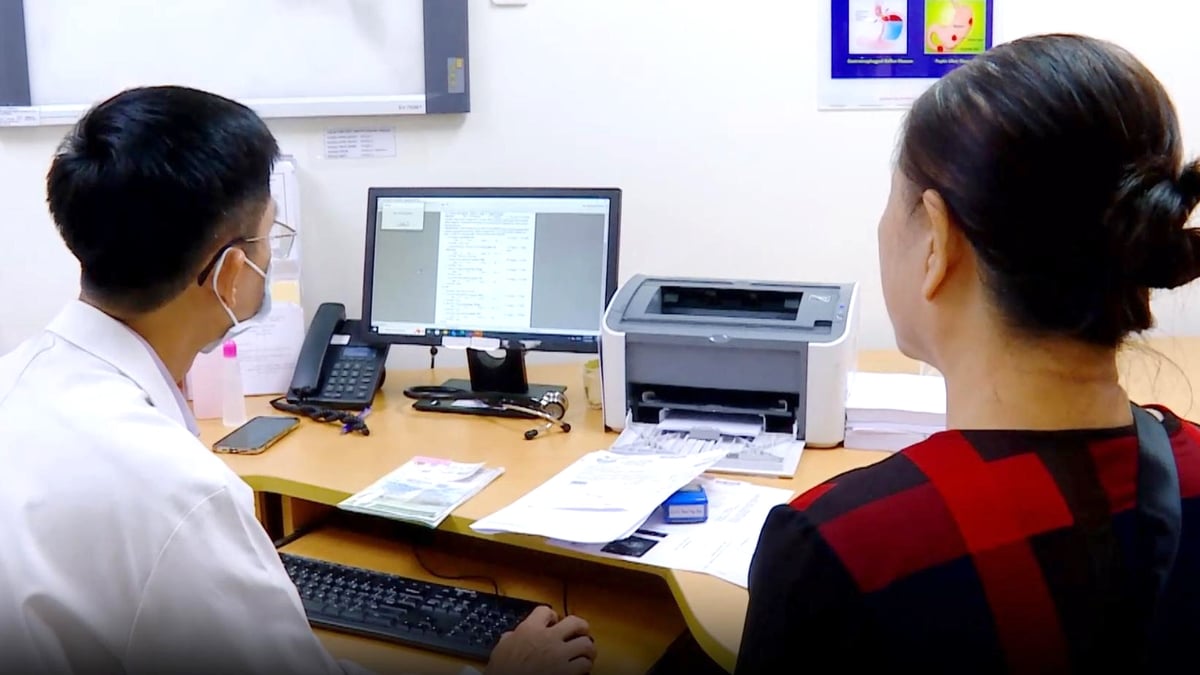On the morning of December 20, Hanoi Obstetrics and Gynecology Hospital organized the 12th Hanoi Obstetrics and Gynecology Scientific Research and Guidance Conference in 2024 with the participation of hundreds of doctors in the field of obstetrics in the northern provinces and cities.
Dr. Mai Trong Hung, Director of Hanoi Obstetrics and Gynecology Hospital, said that the annual conference is a place to exchange comprehensive specialized knowledge, demonstrating the connection between Hanoi Obstetrics and Gynecology Hospital and hospitals in Hanoi and neighboring provinces as well as delegates nationwide.
Through the direction of the line, in recent years, the obstetrics and gynecology sector has made important progress, from maternal and fetal health care, reducing deaths in hospitals to specialized fields of prenatal screening, fetal intervention, gynecological cancer, endocrinology, reproduction, infertility, and sterility.
Dr. Mai Trong Hung, Director of Hanoi Obstetrics and Gynecology Hospital, delivered the opening speech at the conference. |
As the final line in the field of obstetrics and gynecology, since 2018, Hanoi Obstetrics and Gynecology Hospital has always been aware of its role and responsibility and wishes to cooperate, exchange professional expertise, and transfer techniques to contribute to improving the quality of work in reproductive health care and improving the quality of the breed.
Knowledge of fetal intervention is once again gaining the attention of many obstetricians.
At the conference, Dr. Phan Thi Huyen Thuong, Deputy Director of the Fetal Intervention Center, in her speech on "Application of fetal laparoscopic surgery in the treatment of congenital diaphragmatic hernia", said that congenital diaphragmatic hernia (CDH) is a congenital malformation with an incidence of about 1/2200 pregnancies.
This is a defect in the diaphragm due to the thoracic and abdominal membranes not closing completely at 9-10 weeks, causing digestive organs to move into the chest cavity, causing pulmonary hypoplasia and pulmonary hypertension, leading to respiratory failure and high mortality rate.
According to Dr. Thuong, about 30-50% of fetuses with congenital diaphragmatic hernia are terminated before 24 weeks, with an average survival rate of 37.7%. If the baby is born, this condition will cause long-term sequelae for the baby: oxygen dependence, asthma, bronchiectasis...
Postnatal treatment is ineffective and the child has long-term sequelae due to pulmonary hypoplasia and pulmonary hypertension, especially in cases of moderate and severe diaphragmatic hernia.
Therefore, percutaneous transluminal endoscopic (FETO) prenatal intervention is considered a promising intervention for severe and moderate CDH cases.
According to Dr. Mai Trong Hung, Director of Hanoi Obstetrics and Gynecology Hospital, the hospital is conducting a research project to develop and evaluate the results of the prenatal intervention procedure for congenital diaphragmatic hernia using the technique of tracheal occlusion through fetal endoscopy at hospitals in Hanoi. The study will select 15 pregnant women diagnosed with congenital CDH to participate from July 2024 to June 2027.
"Fetal laparoscopic surgery, especially FETO, has emerged as a promising intervention for severe and moderate CDH. Despite many challenges, continuous advances are promising for improved outcomes. Our goal is to establish a fetal laparoscopic tracheal occlusion technique for treating congenital diaphragmatic hernia at a hospital in Hanoi," said the Director of Hanoi Obstetrics and Gynecology Hospital.
At the conference, doctors were updated with many new technical achievements in the field of obstetrics and gynecology such as the results of minimally invasive treatment of uterine fibroids; diagnosis and treatment of cesarean section scar defects; important changes in the perspective of treating endometriosis by prioritizing conservative medical treatment, minimizing surgery and repeated surgery; preserving the uterus in placenta previa; treating premature rupture of membranes according to gestational age...
























































![[Maritime News] Container shipping faces overcapacity that will last until 2028](https://vphoto.vietnam.vn/thumb/402x226/vietnam/resource/IMAGE/2025/7/30/6d35cbc6b0f643fd97f8aa2e9bc87aea)













































Comment (0)